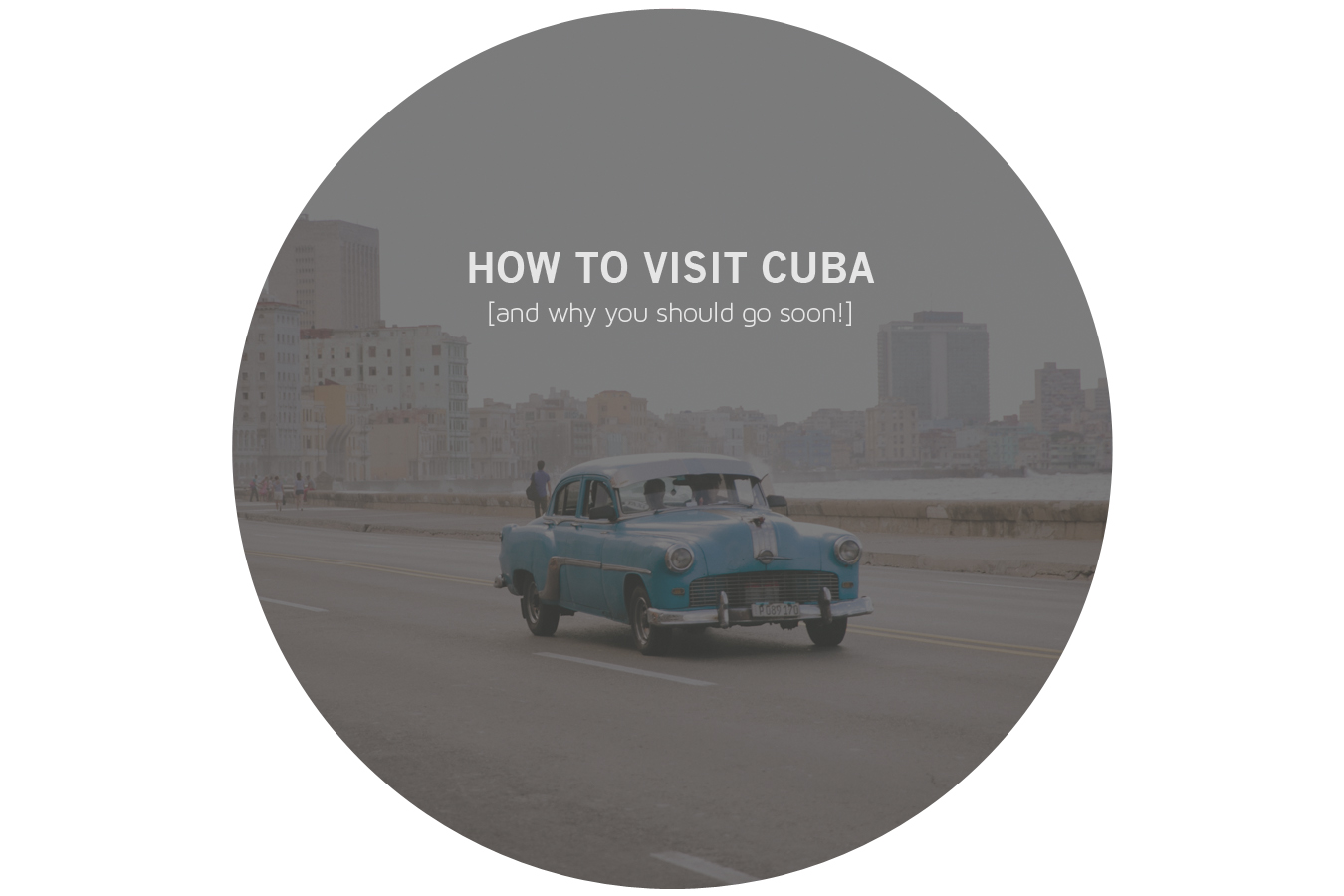
Well hello, hello.. if it isn’t 2016 and the first blog post of the New Year!
I realize we’re putting two travel posts back to back, and the DRCongo and Cuba are gonna be quite different, but we’ve had so many people writing to us with Cuba questions that this post just can’t wait..! So here goes. [This post is gonna be mega!]
On January 1st, while still in a fog from all of the champagne + dancing the night before, we hopped on a plane and headed for Cuba. Its been the #1 destination on our wish list for years now, and what better excuse than having it be the first thing we did in the first hours of the year, and, adding it as my 30th country in my 30th birthday month?! (Can you tell I need to validate adventures to myself? Cuz I do, apparently.)
Rather than write pages and pages of the marvel we found and experienced, I will let the photos do the talking, and will add in travel tips and blurbs throughout the post. It really was a ‘top 5 in the world so far’ experience for both of us, and I absolutely recommend that everyone go. ASAP. Because Cuba is changing a lot right now and you wanna see it while it is still.. this way:



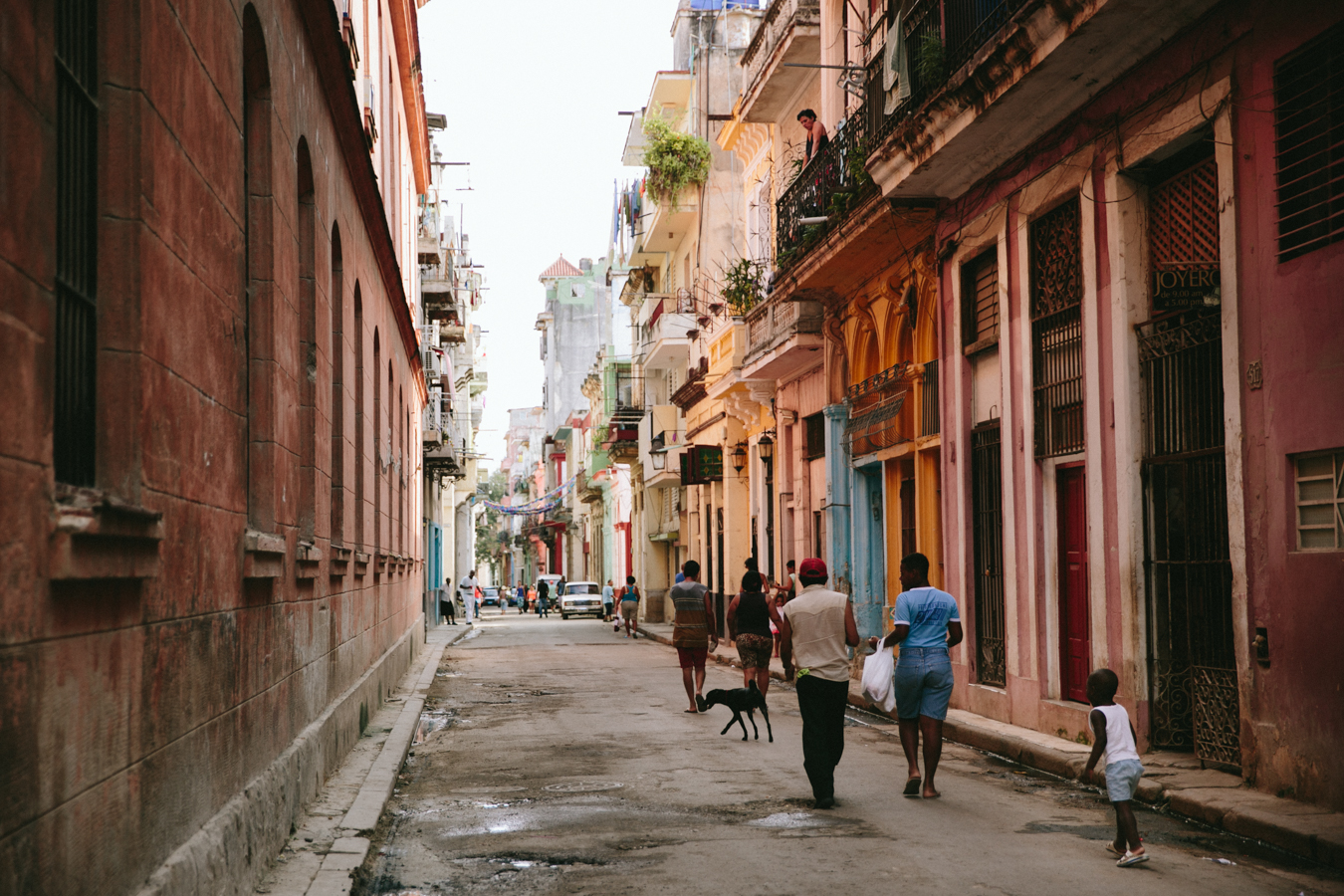


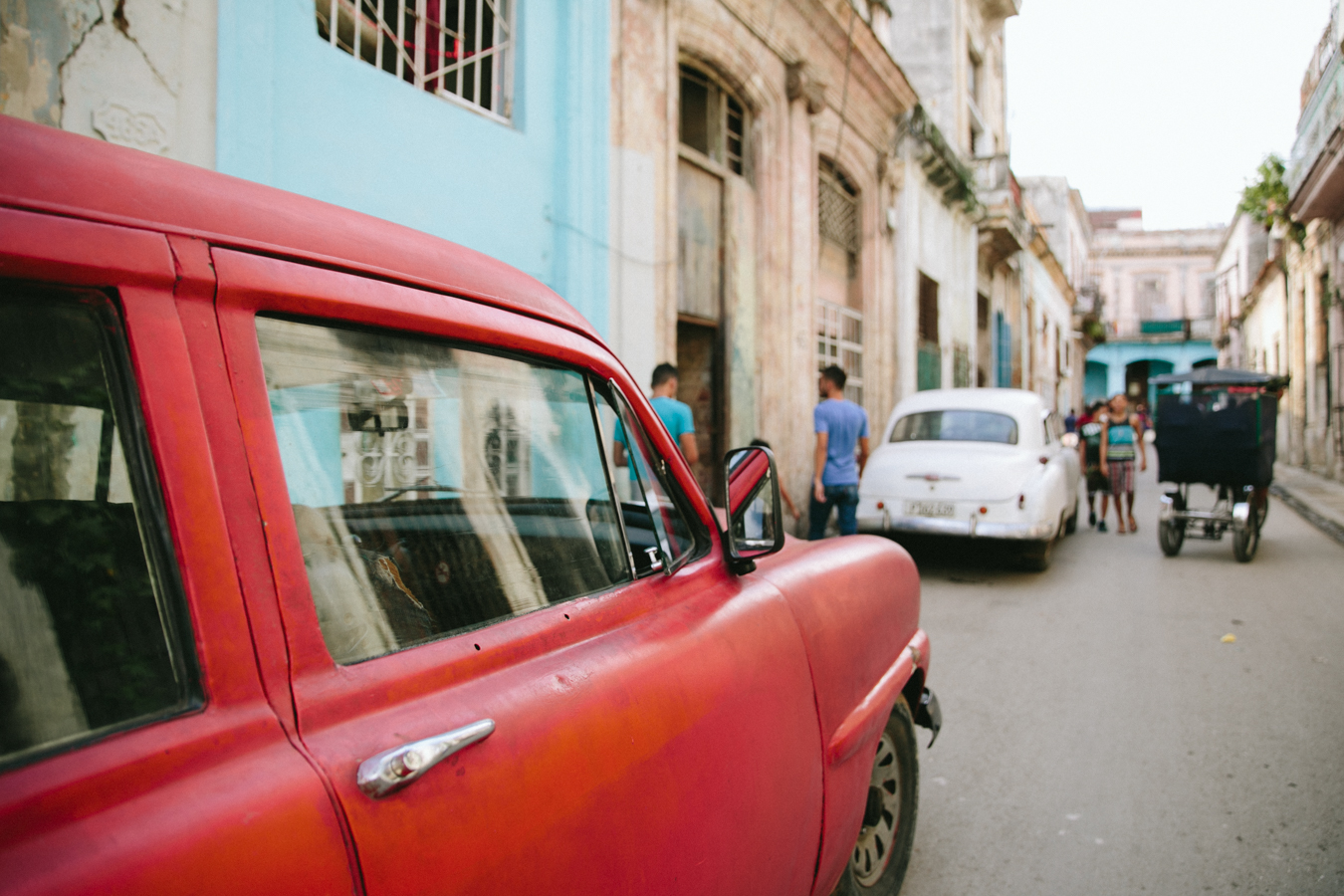


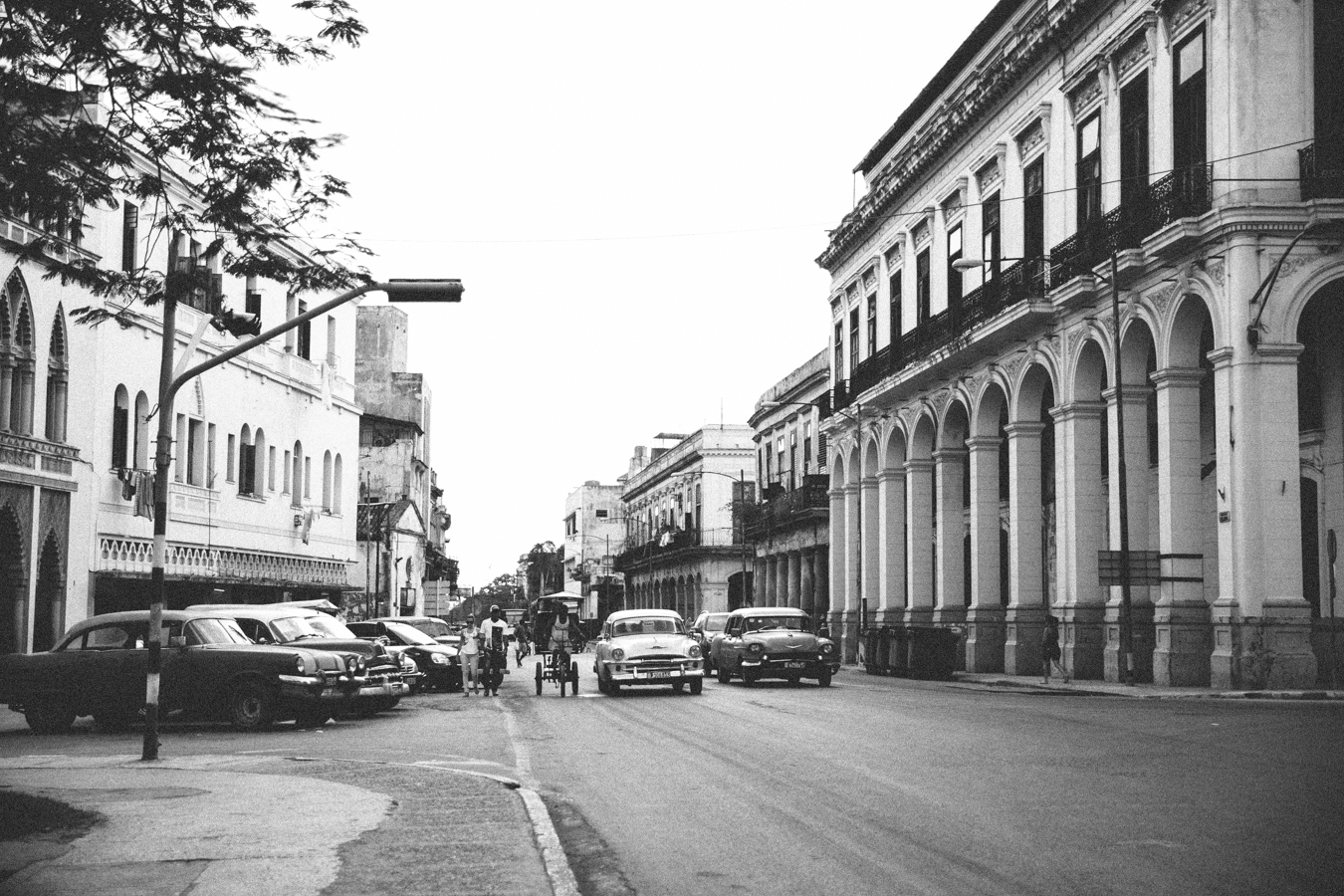

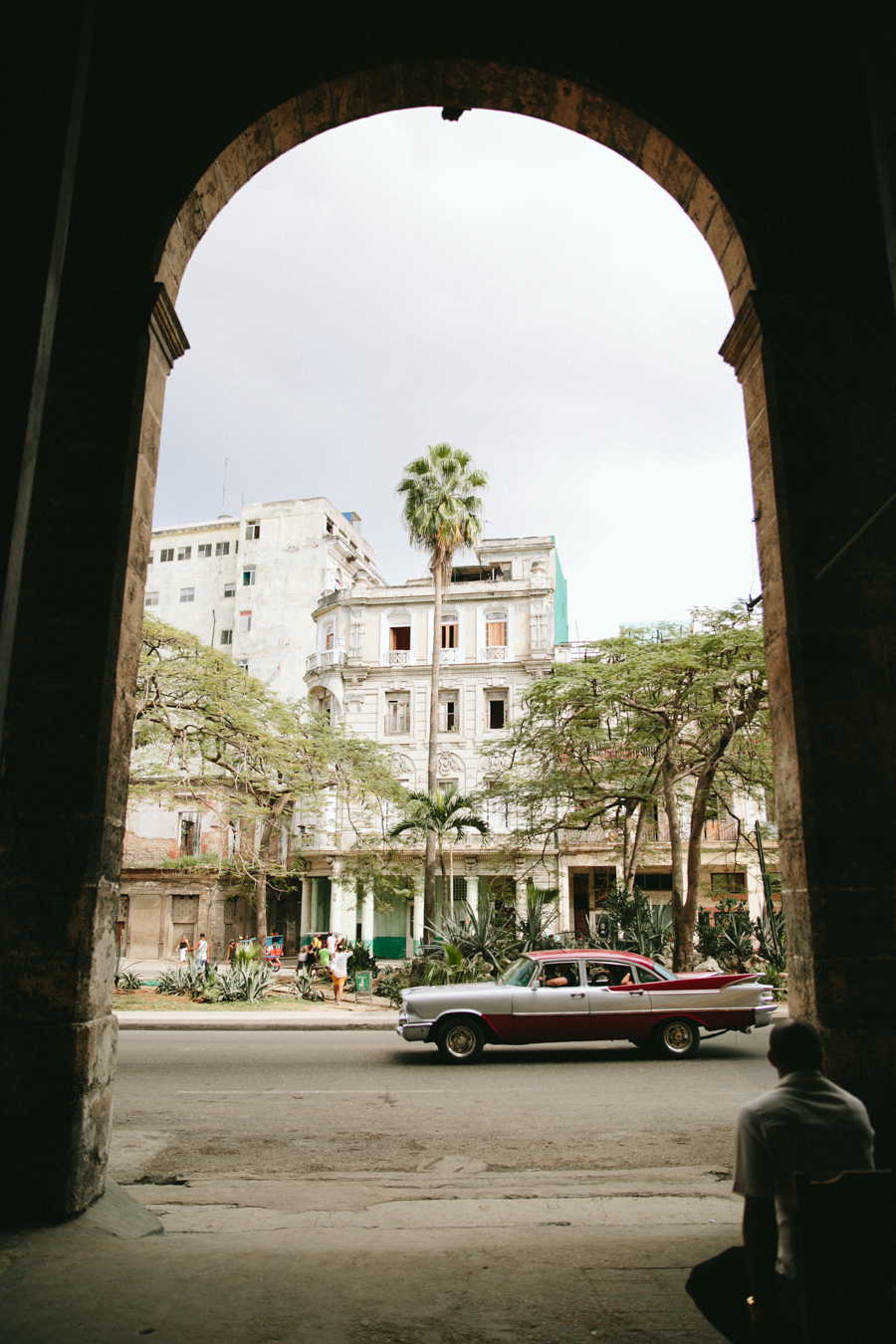
So first up.. the, “but you’re American! How did you get there?” question…
Cuba made a lot of news last year when Obama restored relations with the formerly-forbidden island just 90 miles south of Miami, but travel for American tourists still requires jumping through a series of hoops. When researching online, you will find that “purposeful travel” to Cuba is currently permitted under 12 categories, including things like visiting family, journalistic activity and professional research. We went as journalists, but there is actually no process to go through to gain such a license or visa for travel from the US as of January 2016. The short answer is: The US border patrol said absolutely nothing about our trip to Cuba, and didn’t even ask to see proof of why we were there, even though we had it prepared because that’s just smart. We even allowed Cuba to stamp our passports and wrote that we had been there on our re-entry form for the US, and they didn’t even mention it. Our experience was smooth and easygoing, but it is still wise to have a purpose in your trip so that you can provide proof, should the US request to see it upon re-entry. (Plus, who wants to see the world as just a ‘tourist’, anyway?)
The actual HOW we got to the island is a different story.
Since US websites haven’t caught up with travel restrictions, trying to book flights from US websites ended with a series of dead-ends and ‘this route is blocked’ error messages. In my effort to create a work-around, I tried an array of things, and ended up buying flights from LA to Cancun through a last-minute deal on United, and then booking Cancun to Havana on the Canadian version of copaair.com. (Like I said, there are hoops to handle.) There are charter flights available from Cancun and also Miami, but we booked our trip fairly last minute, so I didn’t have time to explore every possibility with that option.
To get a visa to enter Cuba was as easy as pie.
Literally. A friend had told us that you buy them with cash on your way into the country, so we went with that plan, and bought them for $25 USD (cash) from a guy wearing a ‘CUBA’ tag at the airport in Cancun. Yup, it felt as unofficial as heyyyyll, especially when he hand-wrote our names on the visas with one of those amazing pens that has an eraser at the end of it, but they worked! Just roll with it, y’know?






[Oddly enough, this is my favorite photo from the whole trip. I saw this gorgeous woman in her perfect pink ensemb knock on the door and managed to snap the moments where she waited for the door to be answered. This frame captures Havana so magically, I think.]



Once in Havana–or La Habana, I should say–here is what you should know:
♦ Spanish! Oh my gosh, guys. I can’t stress this enough. English ain’t no thang in Cuba. You’ll want to communicate at least basics, if not more, (because Cubans are amazing and you really just want to chat with everyone you meet) so start practicing with Duolingo now. Or, travel with someone who is fluent. 😉
♦ The packing logistics… Cuba is humid! I wore jeans on the first day and totally regretted it. You’ll want soft, flowy fabrics and comfy walking shoes. We walked about 10 miles every day because we just couldn’t stop exploring.
♦ It also rained randomly! Kinda tropical / rain forest vibe. Pack a tiny rain poncho in your day bag.. that’s one thing we wish we had with us, but just got mega drenched a few times. Ah well! Ya learn.
♦ Nothing is ‘fast’ in Cuba. Including food. Meals take 1-2 hours, so bring snacks. If you ask us? Eat a big breakfast, bring your own snack for lunch, and then eat a big dinner once the sun has gone down. This is another thing we didn’t do, but wish we had.. it is a bummer to miss hours of daylight [ = photo time!] on a meal break.
♦ Take a guide book. Since English is not something you’ll encounter much, and the internet doesn’t exist there, this is actually the only time in our lives we have ever clung to our Lonely Planet Guide like our lives depended on it. Maps.. places to eat.. even what areas to visit, this is absolutely a ‘must’ for anyone going to Cuba. Trust me.
♦ Cuba is 100% cash. Like, I mean it. ONE HUNDRED PERCENT CASH. And getting that cash can be a huge and mega ordeal. Credit cards aren’t accepted, and ATMs almost never work. [We tried both our US and Australian cards a few different times to get more cash out, and none of them worked.] Don’t underestimate how much cash you will need, either. It really isn’t cheap. As a gauge: Jayden and I brought $1000 USD into the country with us, which is technically 1000 CUC$ [the Cuban currency that tourists pay in], but you lose almost 10% in the exchange rate, so we ended up getting about 900 CUC$, and almost ran out of money in our 5 days there. Bring more than you think you’ll need. If we were to go again, we’d bring $150 USD per person, per day. And we aren’t extravagant travelers, either. I should also mention that there is only one place in Havana to exchange your foreign currency into CUC$, and the line is L O N G, and sometimes the bank runs out of CUC$. One of our days there, we were out of CUC$ and the bank was out, so all we could do was keep a sense of humor and focus on doing free things for the remainder of the day.
Example of the line to get money out at the bank:

♦ We adored walking El Malecón – the esplanade and sea wall that runs around 8kms along the Havana coast. It was the perfect time to see cars, people, fisherman and just take in glorious Cuba. We walked it almost every day, in one capacity or another. [Similarly, I did not love Obispo in Havana, which was the most ‘touristy’ street we experienced our whole trip. And that is the only negative thing you’ll hear me saying about Cuba. Ha! Really!]









Answers to other questions you might have, plus random tips:
♦ Internet / wifi is not a thing in Cuba. This makes it difficult to pre-book your accommodations and plans there, and just stay connected while you’re there. “Technically” tourists have access to wifi, but I wouldn’t count on it. For example, if you go into the big tourist hotels, they will say they have wifi. You pay around $7 for an hour, and maybe get one Instagram photo or email to load. It’s more frustrating than it is efficient, really. Short answer? Put your away message up on your email and do not waste your beautiful time there trying to be connected online. It ain’t worth it. We have Verizon and could get roaming, which was nice for peace of mind in the event of an emergency, but even then, texts are 50 cents each and phone calls are around $2/minute, so again. Not worth it. Just tell yourself you’re really traveling back in time and bask in the weird, kinda awesome experience of being unplugged.
♦ Crime is almost nonexistent in Cuba. The few people we talked to said that there are more police than civilians, and punishment for committing a crime is intense. Even going out late at night, we felt totally safe. Someone swiped a tourist’s phone late one night at a cafe we were sitting at, but a local Cuban guy chased down the phone thief and came back about 5 minutes later holding the phone. Cubans overwhelmed us with their warmth and kindness, and I could tell numerous stories where the locals went out of their way to welcome us and truly ensure we were having the best experience.
♦ While we had every intention of traveling to Trinidad while we were in Cuba, we didn’t actually have enough cash with us to go once we got on the ground. We had planned for about $100 CUC$ each way in a taxi to get there, (since buses are slow and often over-booked or cancelled at the last minute) but couldn’t find a driver to take us for less than $200. Y’ouch. We happened to go during peak season, so this might not be a problem during a different time of year, but again. Bring more cash than you think you’ll need. And, don’t underestimate how huge Havana is. We spent 4 of our days there and didn’t even see all of it.


















♦ Cigars! The most common ‘scam’ (although it was pretty harmless) we encountered had to do with people wanting to sell us crummy cigars in the street or from their home. i.e. they were homemade and wouldn’t smoke the same way as a true Cuban. Stick to buying Romeo and Juliets at hotels or the airport, and you’ll be good to go.
♦ Food Faves: Our very favorite meal in Old Havana (by far) was Doña Eutimia. Oh yes, my friends. You must go. They require reservations — usually days ahead — so go as soon as you arrive and then book as often as you can. Ha! I mean, really. Just trust me. Another fun experience was Bodeguita del medio, also in Old Havana, and El Idilio in Vedado.
♦ Live music is all around you. Always. And it will make you so happy. Lots of locals will invite you to purchase expensive tickets (i.e. $30) to see a live show that involves a/some member[s] of the Buena Vista Social Club, but the free music you’ll hear at bars every night is just as good. And you’ll get to hang around locals, too. (Locals would never go to something that costs more than a few CUC$.) One night, we went to a spot called La Zorra y El Cuervo to hear jazz, and it was dope. Get there early — around 10:30, I think, to ensure you get a table. It is a tiny little intimate spot, entrance is $10 and includes 2 drinks. You walk in through a red phone booth. Need I say more?
Also, go to Fabrica Del Arte – a gallery / club way ahead of its time.
♦ Check the hours of the places you want to go as soon as you arrive. Opening / closing days and hours change all of the time, and we found a lot of places were closed Mondays, especially. Sometimes other random days. So just plan ahead to avoid missing out on that thing you want to see/do most cuz it is closed.


Cubans are the kindest, loveliest people. We would constantly stop to chat with people, and photograph them, too, and they were consistently warm and wonderful!

♦ Cubans are so into sports and being active, especially when it has to do with boxing and baseball. We tried to go to a baseball game, but the team was playing games in other cities while we were there. We did happen to pop our heads into this boxing gym, and just loved watching the coaches/trainers for awhile.







Cuba has plants + house plants everywhere.. and I was especially in love with their attention to details like this!



Our adventure companions Liz + Ben of Sseko Designs came from Portland to rendezvous with us in Cuba. Liz is 4 months pregnant and was a total trooper in keeping up with us as we walked 10 miles a day.. and even let me put her in my clothes while she modeled for a lil shoot. 😉















♦ We loved visiting old buildings — like the Hotel Habana Riviera. It hasn’t really been updated since the mid ’50s, so just walking around feels like magical time travel is taking place. A lot of American mobsters used to gamble and hang here, so I stood at the three story diving board at the pool for an age just trying to imagine a scene from the ’50s where Nat King Cole was taking a dip. Literally the best thing.
One of my only regrets was that I hadn’t spent more time researching Cuban history and/or watching Cuban films before we went. Being there definitely sparked that interest so that is happening now — but I was walking the streets in the city wishing I had a better sense for what happened where, and what these areas used to look like in the early ’50s.

(In contrast.. lots of empty pools around Havana..)



♦ Accommodation: stay in casa particulares instead of big touristy hotels. Basically, it is like a homestay where you’re getting to be in a Cuban home and interact with the folks who live there. Just amazing! We had the best experience.
We tried to book before we got to Cuba, but as you’ll find, most places don’t have websites, so we thought we had booked a place and got an email the day we were flying to Cuba saying, “So sorry for the late update, but we just read your email and don’t actually have a place available on the dates you’ll be here.” So, we landed in Havana. Got a taxi to Old Havana ($35) and looked for places that had “the Casa sign” on the door. The symbol looks like this, and basically means that you can knock on that door and ask if they have a room. Like I said, it isn’t going to feel like modern travel, but it is amazing. Just roll with it. Be spontaneous! We paid 60 CUC$ a night for our room, and then breakfast was an extra $5.
If this idea of planning your own trip and ‘winging it’ like we did doesn’t float your boat, Collin at Cuba Educational Travel was incredibly helpful as a resource as we planned our trip and I would absolutely recommend you reach out to plan your trip through them. Another friend we met on our travels had booked their adventure through Havana Holdings, and also said they were having a fabulous experience having had locals organize things for them on the ground before they landed in Cuba. Again, if the spontaneous “we’ll figure it out as we go along” route doesn’t sound fab, hire these guys to book things for you before you get there. They’re on the ground and can work around the internet-less world of incredible Cuba.
(Here’s a little mini shoot we did in the Casa Particular we stayed in, (called Casa Vitrales).. it happens to feature a soon-to-launch collab between Elephant Landing + Sseko! Can you guess what the product is?)








♦ As an American, my idea of Cuba has always been this forbidden fruit.. but the picture in my mind is a magical land of urban decay. Until I got there, I never ever had connected with the reality that Cuba is a tropical wonderland with Caribbean beaches that are better than you’ve ever seen before[!]. Seriously. The best. We took a day trip (a taxi was around 30 CUC$ each way, and he just waited for us all day while we were there) to Playa Santa Maria and hung out in an abandoned area surrounded by banana leaf umbrellas and a guy in a tiny little stand selling rum-filled coconuts and beers for $2. Um, yes. So much yes.


Strolling Cuban minstrel walked in on our shoot and insisted Liz play and sing. She did. Bliss moment right here.
Also: found pineapples strewn across the beach. No idea where they’d come from, but it sure gave an extra sparkle to the experience.



Ummm.. best timing ever?


If you can’t guess already, Liz spent many moments being photographed by me. The occasional passer-by would jump into the photos, like this. Always inducing shared laughter and joy… really, the best. Also: cigars at 10am? Always a good idea.










Your best, most authentic and wonderful experiences in Cuba will be the unplanned ones. The ones you couldn’t imagine in this instant if you tried. Where you stick your head into what looks like an abandoned building and find a group of dancers practicing, or someone singing while a band is playing. So go. As soon as you can. The country is changing a lot at the moment, and it won’t feel ‘like this’ for too long. Go get lost, my friend.
You’re always welcome to write with questions — and/or write when you go and share your own stories! We’d absolutely love to hear about them. Bon voyage! xo
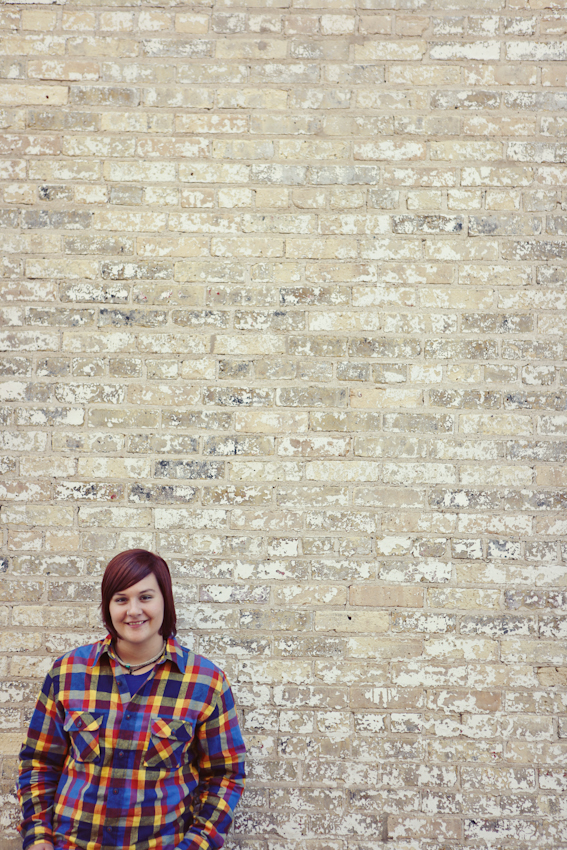

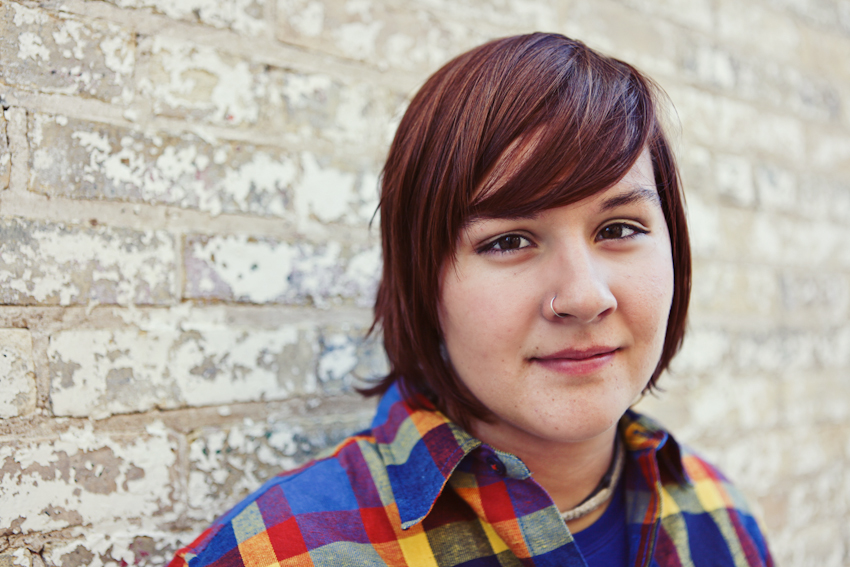
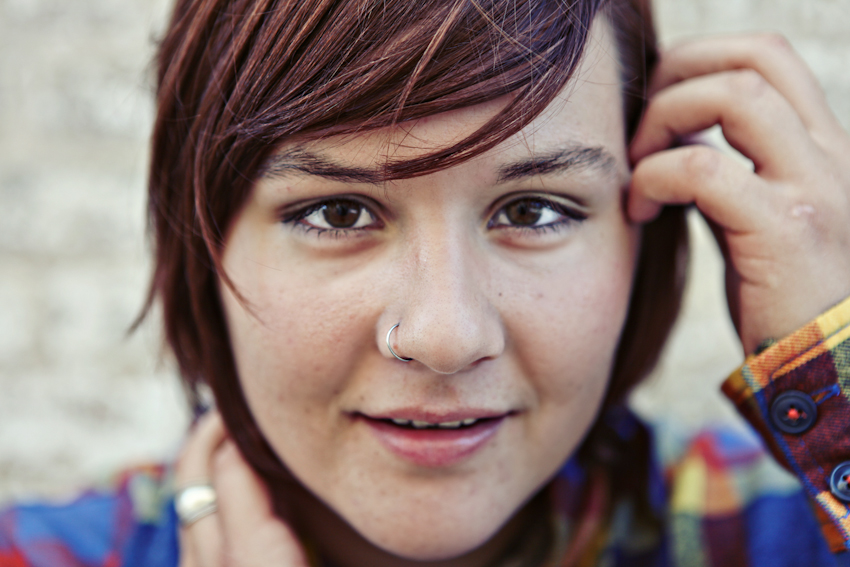
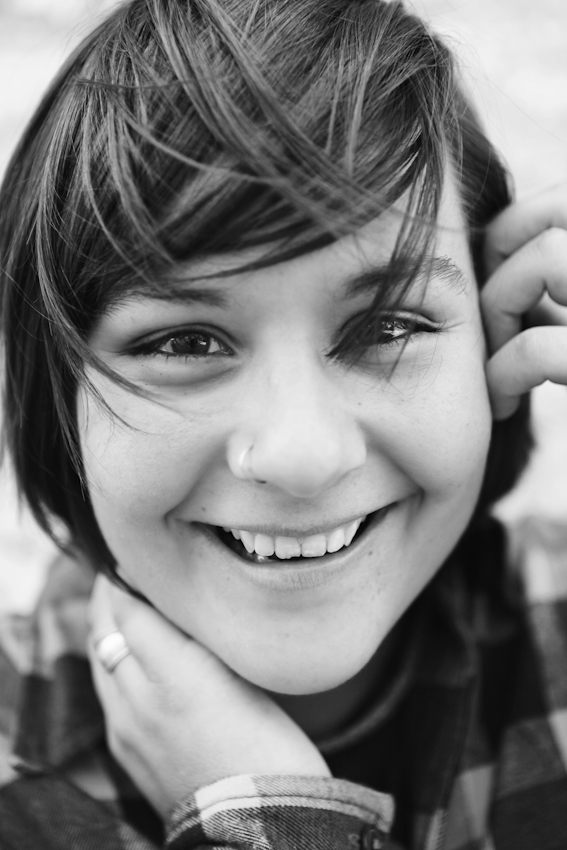
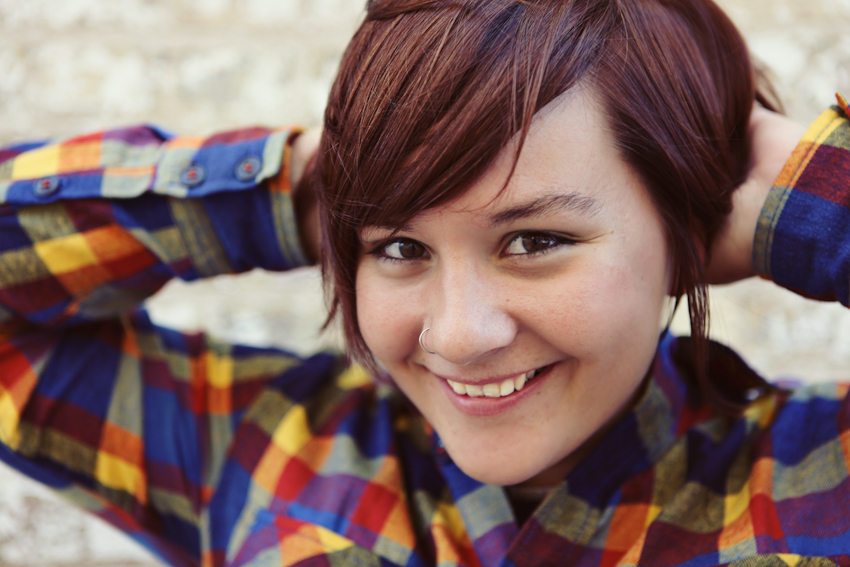
[…] Woodnote […]